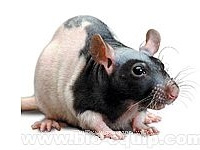
10月10日,美国研究人员报告说,他们以腿部肌肉受伤的年轻实验鼠为研究对象发现,植入肌肉干细胞可以使实验鼠肌肉恢复得比受伤前更强大,还可帮助实验鼠抵御因衰老而导致的肌肉萎缩。
研究人员植入的肌肉干细胞来自健康的年轻实验鼠。植入手术后,受伤实验鼠腿部肌肉不仅在几天内得以恢复,而且这一部位的肌肉质量增大为受伤前的1.7倍。研究人员最初认为,这可能是暂时现象,但他们最终发现,实验鼠肌肉终其一生(约为两年)都保持这一水平,而且与普通老鼠相比,它们的肌肉更能够抵御老化过程,肌肉力量和质量能持续保持。
研究人员提醒说,他们在实验中发现,将肌肉干细胞植入健康实验鼠不能起到同样效果。他们认为,这表明干细胞被植入的环境非常重要,不同环境下,干细胞反应的方式也不一样。
参与研究的科罗拉多大学布拉德利奥尔温教授表示,如果这一成果能够应用于人类,肌肉萎缩症等疾病就有望找到新疗法。研究人员目前已着手进行将人类或大型动物的干细胞植入实验鼠的实验,以验证是否能收到同样效果。
该相关研究成果发表在美国《科学转化医学》杂志上。(生物谷Bioon.com)
生物谷推荐英文摘要:
Sci Transl Med DOI: 10.1126/scitranslmed.3001081
Prevention of Muscle Aging by Myofiber-Associated Satellite Cell Transplantation
John K. Hall1,*, Glen B. Banks2, Jeffrey S. Chamberlain2 and Bradley B. Olwin1,?
1Department of Molecular, Cellular and Developmental Biology, University of Colorado, Boulder, CO 80309, USA.
2Departments of Neurology, Medicine, and Biochemistry, University of Washington Medical School, Seattle, WA 98195, USA.
Skeletal muscle is dynamic, adapting to environmental needs, continuously maintained, and capable of extensive regeneration. These hallmarks diminish with age, resulting in a loss of muscle mass, reduced regenerative capacity, and decreased functionality. Although the mechanisms responsible for this decline are unclear, complex changes within the local and systemic environment that lead to a reduction in regenerative capacity of skeletal muscle stem cells, termed satellite cells, are believed to be responsible. We demonstrate that engraftment of myofiber-associated satellite cells, coupled with an induced muscle injury, markedly alters the environment of young adult host muscle, eliciting a near-lifelong enhancement in muscle mass, stem cell number, and force generation. The abrogation of age-related atrophy appears to arise from an increased regenerative capacity of the donor stem cells, which expand to occupy both myonuclei in myofibers and the satellite cell niche. Further, these cells have extensive self-renewal capabilities, as demonstrated by serial transplantation. These near-lifelong, physiological changes suggest an approach for the amelioration of muscle atrophy and diminished function that arise with aging through myofiber-associated satellite cell transplantation.







